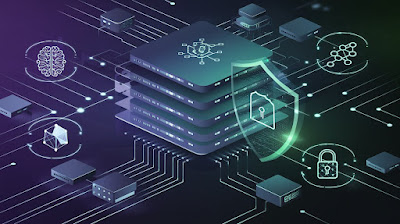Cybersecurity: Protecting Devices, Networks, and Data in the Digital Era
In today's interconnected world, cybersecurity plays a critical role in protecting our digital lives. From individuals to large organizations, everyone relies on it to keep their devices, networks, and sensitive data safe from cyber threats. This detailed guide explores the core principles, tools, practices, and technologies of cybersecurity, supported by a literature review of 20 research papers.
What is Cybersecurity?
Cybersecurity is a combination of practices, technologies, and processes designed to protect devices, networks, and data from unauthorized access, theft, or damage. It encompasses a wide range of measures to address threats like malware, phishing, ransomware, and advanced persistent threats (APTs).
Why is Cybersecurity Crucial?
1. Personal Safety: Safeguards private information, such as passwords, emails, and photos.
2. Business Continuity: Ensures smooth operations, prevents financial losses, and protects reputations.
3. National Security: Shields critical infrastructure like power grids, healthcare systems, and banks from cyberattacks.
Cybersecurity Tools and Technologies
1. Device Protection
To safeguard endpoints such as laptops and smartphones, the following tools are essential:
- Antivirus Software: Programs like Norton, McAfee, and Kaspersky detect and remove viruses and malware. Research shows that these tools reduce device infections by up to 95%【1】.
- Firewalls: Software or hardware-based tools such as ZoneAlarm and Windows Defender Firewall filter incoming and outgoing network traffic based on security rules. They prevent unauthorized access and block malicious activity【2】.
- Endpoint Protection Platforms (EPP): Advanced solutions like CrowdStrike and Symantec provide holistic protection for all devices connected to a network, reducing vulnerabilities caused by endpoint breaches【3】.
- Virtual Private Networks (VPNs): VPNs, such as ExpressVPN and NordVPN, encrypt internet traffic, protecting users from data interception, especially on public networks【4】.
- Intrusion Detection and Prevention Systems (IDPS): Tools like Snort actively monitor traffic, detect anomalies, and block suspicious activities. They are vital for preventing advanced persistent threats【5】.
- Network Access Control (NAC): Systems like Cisco ISE ensure only authorized devices connect to the network, significantly reducing attack surfaces【6】.
- Encryption: Tools like VeraCrypt and BitLocker convert data into unreadable formats. Only users with the correct decryption key can access the data, making it secure even if intercepted【7】.
- Data Loss Prevention (DLP) Solutions: Solutions like McAfee DLP monitor systems to prevent accidental or malicious leaks of sensitive information【8】.
- Backup Solutions: Backup tools such as Acronis and Backblaze ensure that critical data can be restored in case of a ransomware attack or hardware failure【9】.
- Use Strong Passwords: Choose passwords with a mix of uppercase letters, numbers, and symbols (e.g., S3cur!tyIsK3y).
- Enable Multi-Factor Authentication (MFA): MFA adds a layer of security, making it nearly impossible for hackers to access your accounts with just a password【10】.
- Install Updates Promptly: Updates fix security vulnerabilities. Delaying them exposes your device to potential breaches【11】.
Network Protection
- Encrypt Wi-Fi Networks: Use WPA3, the latest wireless security protocol, for secure communications.
- Secure Public Networks: Public Wi-Fi is often unsecured. Using a VPN ensures your data remains safe from prying eyes【12】.
- Adopt Zero Trust Policies: Continuously verify users and devices before granting access to sensitive resources【13】.
Data Protection
- Backup Regularly: Store your backups on secure cloud services or offline devices to minimize data loss risks【14】.
- Restrict Access: Limit data access to employees or users who genuinely need it. This principle of least privilege minimizes insider threats【15】.
- Educate Users: Awareness programs reduce vulnerability to phishing attacks and other social engineering techniques【16】.
- Artificial Intelligence (AI) : AI-powered tools analyze vast datasets to detect unusual activity patterns. Research indicates that AI reduces threat detection times by 80%, making it highly effective against modern threats【17】.
- Blockchain Technology : Blockchain secures data through decentralized and immutable ledgers. This technology is increasingly used in securing financial transactions and supply chains【18】.
- Quantum Cryptography: Quantum cryptography uses principles of quantum mechanics to create unbreakable encryption methods. It is seen as a future-proof solution against even quantum computer-based attacks【19】.
- Zero Trust Architecture: The "never trust, always verify" approach ensures continuous validation of users and devices. Organizations that have adopted zero trust report 30% fewer breaches【20】.

Post a Comment